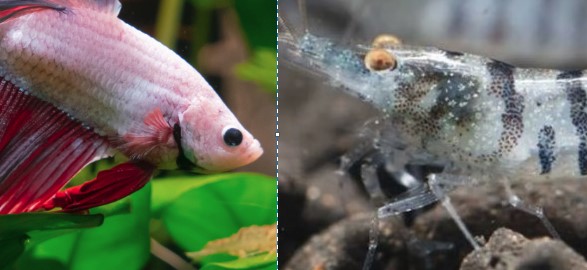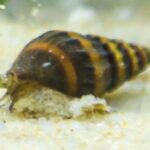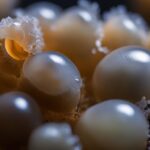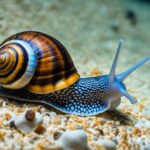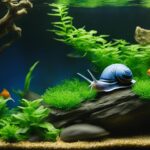When it comes to living together, shrimp and betta fish may seem like an unlikely duo, and in fact, I failed several times and learnt the hard way when starting out. Bettas are predators and many people assume that they are not compatible with other tank mates. However, with the proper care and consideration, these two can actually make great tank mates in many cases.
There a few important factors to consider before putting shrimp with a betta fish. You need to make sure the tank is appropriately sized for both the fish and the shrimps so that everyone has enough space to thrive. Additionally, it is crucial that the water quality of the aquarium is kept high as this will help prevent any aggressiveness or illness from either species in the tank.
Lastly, adequate hiding places should be provided as this will give both creatures a place where they feel securely hidden away from being attacked by one another if they do happen to come into contact. Once all of these needs have been taken into account you can enjoy watching your interesting aquatic lifeforms cohabitating peacefully.
Read on to gain deeper insight and clarify the important question – Can Betta Fish Live With Shrimp.
Tank Preparation
Keeping the Water Clean
An important part of having a healthy and thriving shrimp tank is having proper filtration. A great filter for this environment is one with a low flow, as it helps to remove solid waste in the water while still adding air to it. Shrimp also enjoy grazing on the sponge, so having one built in to the filter is ideal.
If any other type of filter is used, be sure that it has a pre-filter with a sponge. This will help prevent any baby shrimp from getting sucked into the filter and potentially causing harm or death.
When stocking a large aquarium with shrimp (30 gallons or more) filtration is even more important as ammonia and nitrites can really take their toll on these little creatures. Having an effective and safe filter can set up your shrimp for success and keep them healthy.
Also make sure that you are consistently doing regular water changes, as this will greatly improve water quality and overall tank health. By following these steps your shrimp should have everything they need to live happy lives!
If you add any snails, make sure you add additional protection on the return to stop snails getting sucked up.
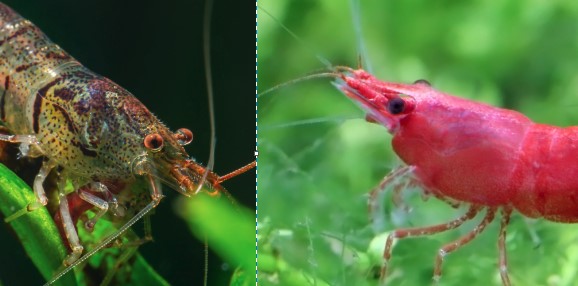
Tank Plans Life for Shrimp and Betta
Plants and hardscapes create a safe and aesthetically pleasing environment in any aquarium, especially when considering the habitats of shrimp and betta fish. When choosing plants for an aquarium, it is important to remember that both species enjoy live plants, tannins, and places to hide. A heavily planted aquarium is the best option since both species tend to thrive in these environments.
Betta fish prefer both plants that they can lay down on as well as those they can hide in; some great options include anubias, tiger lily, banana plants, and other betta bulbs. Hygrophila and water sprite are two easy-to-grow plants that work well due to their tall stature while more compact plants such as hornwort and guppy grass make perfect hiding spots for smaller (and more active) critters like shrimp. Java ferns along with sword plants also offer a fantastic accent to any aquarium layout while serving as additional sheltering opportunities for the shrimp and bettas alike.
Tank Decorations and Ornaments
Decorations can include rocks, driftwood, and other decorations made from shrimp-safe materials. When adding these items to the aquarium, you should keep in mind that the little critters are quite active and quite timid – so having plenty of hiding places for them is essential.
In addition, during molting season (which happens once a month) it is even more important that the shrimp have access to secure hiding places. During this time they will shed their current outer layer and grow a new one – during this period they can become anxious so having some secure spots available will help them feel safe while their shell hardens again. Adding decorations specifically designed for hiding places will aid in providing a stress free environment for your shrimp.
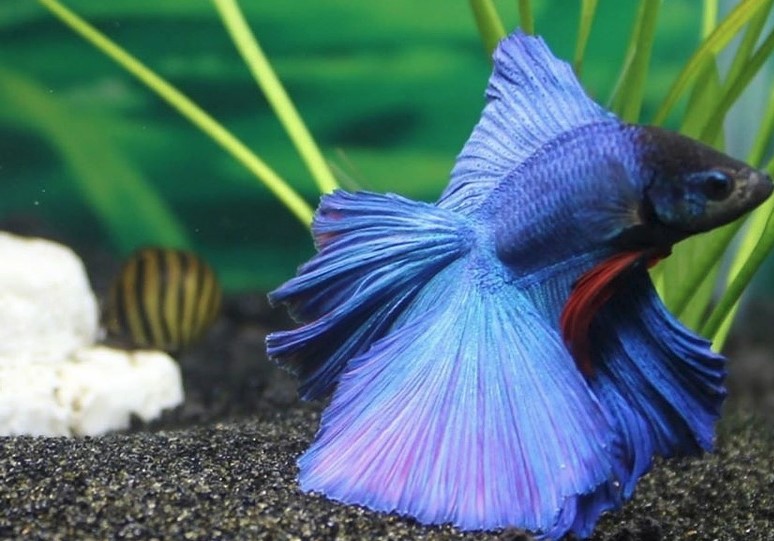
Ornaments can be a great way to spice up the visual aesthetics of your betta and shrimp tank. Whether it’s cheery marbles, interesting figurines or rock formations, they can instantly transform its appearance. Besides the looks, adding such decorations also allow your fish to hide away when they want some quiet time away from any potential predators. This makes them even more welcome additions because bettas especially appreciate a nice place to seek shelter from time to time.
Size up your tank
When it comes to tank size, bigger is always better when it comes to the success of a shrimp and betta fish set up. Unfortunately, I have come across many scenarios where people try and keep this combo in a tank too small for sustainability. For instance, I once kept shrimp with a betta fish in a 3.5-gallon tank which proved to be unsuccessful as all the baby shrimp died shortly after birth due to lack of adequate breaks in the water quality.
To ensure that you have success in keeping both species together, I recommend at least 5 gallons for a small set up or else 10 gallons for something more permanent and capable of accommodating multiple generations at once successfully.
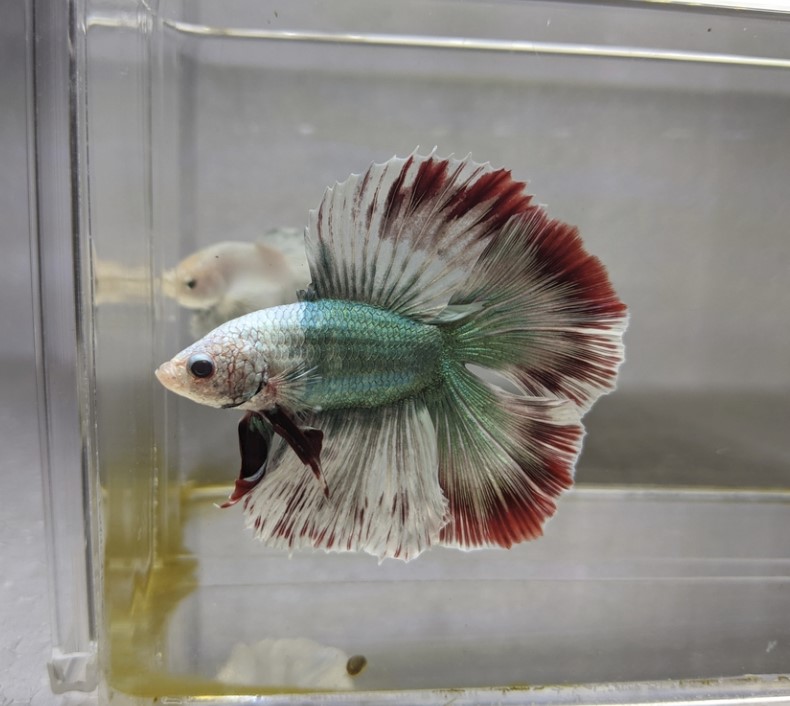
If a larger capacity tank is not an option then perhaps other species of smaller shrimp such as the Amano Shrimp or Ghost Shrimp may suit your needs better due to their propensity towards being able to tolerate more extreme fluctuations in water parameters.
Ultimately deciding on which species of pet you would like based on your situation will both save you time and heartache while also ensuring that your new additions are provided with the best habitat possible.
Keeping the water in check
Water is a key factor to consider when setting up an aquarium. For shrimp and betta fish, temperature, pH, hardness, and trace minerals should also be properly managed to ensure a healthy environment for the inhabitants.
The ideal water temperature for cherry shrimp and betta fish should range from 75F to 85F (24-29C). Temperature can have a drastic impact on the health of your fish, so it’s important to maintain a consistent temperature throughout the aquarium. Shrimps prefer slightly higher temperatures (80-84F/26-29C) as this helps with breeding.
The Ideally the pH should be within the 6.8-7.5 range while hardness (GH) should sit between 4-8 and the KH at 4-5 degrees. To support these parameters, organics can leach tannins into your tank and calcium or mineral sources such as shrimp rocks, tourmaline balls or wonder shells provide trace elements needed for molting.
Substrate
Substrate is an important component when it comes to setting up a healthy and comfortable aquatic environment for shrimp and bettas. Substrate is the material used on the bottom of a tank, such as rocks, sand, or gravel. It serves as a base for plants to grow in and also provides drainage and oxygen flow.
When selecting substrate for shrimp or betta tanks, avoid any materials that are sharp or rough-edged which can cause irritation or injury. Rather, opt for soft sand or fine, rounded gravel as these materials provide more protection from any possible harm. Soft sand keeps the aquarium floor cool while helping maintain water quality by trapping waste particles and bacteria.
Fine, rounded gravel has spaces between each piece that allows oxygen to penetrate through the substrate which helps encourage beneficial bacteria growth that aids in breaking down waste particles.
Furthermore, a good substrate will provide aesthetic value – colored substrates offer a range of attractive options with natural earth tones complementing darker backdrops such as driftwood.
Preparing your Tank for use
Purchasing Betta
When selecting a Betta fish for your aquascape, it is important to pay special attention to whether you are getting a male or female. Male bettas are very impressive with their long fins, bright colors, and elaborate scales.
Female bettas can also be similarly stunning in their appearance, but there is one caveat: the size and length of the fins on males make them poor hunters when compared to the females. The larger fins slow them down significantly and often allow any small prey they find, such as live worms or shrimp, to escape before they can get close enough to eat it.
If you plan on keeping just a single Betta in your tank then it is better to opt for a female rather than a male as females tend to have an easier time hunting and thriving. Females tend to be more active whereas male Bettas may spend more time sitting amongst the decorations or resting at the top of the tank which means they require extra food if they aren’t able to hunt live prey themselves.
If you do choose a male Betta, making sure you keep up with their diet by regularly providing frozen food like mosquito larvae or cooked shrimp is essential for them staying healthy and strong. Keeping this advice in mind will help ensure that you get the right Betta for your tank.
Purchasing Shrimp
When it comes to stocking your aquarium with shrimp, you should consider how many gallons your tank can hold and the desired population size. In general, I recommend a maximum of 2 shrimp per gallon or a minimum of 2 females and 1 male shrimp. This will help ensure that there are enough individuals within the tank for breeding, and also prevents overcrowding and competition.
When introducing a shrimp to an aquarium, it is first essential to provide them with ample time to establish a habitat and begin breeding before adding a betta fish.
This enables the shrimp to start reproducing and develop further so that when the betta is added there are baby shrimp in the tank. If this isn’t an option, then carefully introduce the shrimp immediately before introducing the betta by using a fish transport system or cup. Having live plants present after adding the shrimp is ideal, as these will help them hide should the betta act aggressively towards them.

In addition to slowly and carefully introducing your shrimp and betta, providing plenty of hiding places for your cherry shrimp to access helps ensure their safety from potential predators in the tank. Hiding places can be easily made using rocks, plants or other items like tubes.
It is important that these hiding places are not too small for any adult shrimp, otherwise they may become stuck inside!
Finally, closely monitoring the behaviour of all inhabitants in your tank will help avoid any problems developing between species due to aggression or territorial issues.
Keeping the Tank stocked with food
When starting your tank may not contain enough naturally produced food to sustain a large number of shrimp, so it is important to supplement their diet with quality shrimp food. Also almond, red hiryu and other algae wafers can be used to add variety to the menu for a balanced diet.
I recommended to feed them at the same time as your betta fish, when the betta is distracted with its own meal. This allows the shrimp to get their share without any danger. It is better to slightly underfeed than overfeed and regularity of feeding usually varies from 3 or 4 times a week.
Ongoing Tank Enhancements
I always recommend to not set and forget when you have shrimp and betta together, its a continuous improvement program to make sure you get the best outcome for both species. Providing your betta with lots of places to hide is an essential to a happy and healthy home for them.
Keep a good watch on your shrimp, and if needed stock rocks and botanicals or create small nooks. When it comes to providing places specifically for the betta, think larger hiding spots, floating logs, and anything else they might find inviting to curl up inside of. I would suggest having 2 or 3 hiding places provided per betta in the tank.
Also remember that live plants are a great way to give your betta plenty of options for hiding spaces as well so consider filling at least half your tank with live plants. Live plants will also add natural beauty and brightness to any aquarium while brightening up the colors of your fish!
Feeding Time
Feeding a betta fish and shrimp together is not as difficult as one might think. Betta fish eat a combination of both plant and meat sources which makes them easy to feed. They require a high protein diet, so a good quality flake or pellet food should be included in their diets. Once the betta fish are taken care of, you don’t have to worry too much about the shrimp as they are mostly scavengers. Shrimp generally munch on whatever leftovers there may be after your betta has finished its meal.
Although it is not necessary to directly feed them, it is important to keep in mind that the shrimp still need a balanced diet and should receive proper nutrition from time to time. To provide them with the necessary nutrients, you can supplement your aquarium with plants like spinach, zucchini and cucumber among others. You can also add some meaty foods such as small pieces of fish flesh, krill or other proteins compatible to their diatoms. By doing so, you will ensure that your betta fish and shrimp get enough food for healthy growth and development.
Best Shrimp to live with Betta
One of the most popular kinds is the Cherry Shrimp, which adds vibrancy not only to your betta’s home but also to its diet – bloodworms and other frozen small foods should be broken down into even smaller pieces when feeding these shrimp.
They tend to remain close to hiding spots during the day and will out and about during night time, so you can watch them scouring around the tank looking out for food particles by day and night! Amano shrimp are also compatible with Bettas and do well in tanks containing plants; these shrimp actively graze on algae (both soft/brown and hard/blue-green) making them great janitors for your betta’s home. Ghost shrimp are an intriguing breed due to their colouration , and they can be quite hardy. However, in the presence of betta fish, beware as their tendency to scavenge for leftovers may cause them to end up as snacks for your betta!
Worst Shrimp to live with Betta
The most important thing to avoid when selecting shrimp for your Betta tank is anything too large for them to eat. Certain dwarf shrimp, like crystal red and black shrimps, are far too large for Bettas and should be avoided no matter what. Additionally, certain species may have aggressive personalities that can pose a risk to other inhabitants of the tank. Amano Shrimp are extremely hardy but they have been known to act aggressively towards Bettas, nipping at their fins or tails. This is especially true if there isn’t an adequate hiding spot in your Betta’s tank for the Amano Shrimp.
Another type of shrimp you’ll want to avoid is one that prefers colder water temperatures than those commonly found in tropical aquariums. As such, freshwater fan shrimps should not be kept with Bettas since their optimal water temperature range is between 54- 68 °F (12 – 20 °C). Other types of shrimps such as Vampire or Harlequin shrimps should also be avoided as they prefer saltwater aquariums over freshwater ones and thus could not thrive in a Betta’s home.
In Summary Can Betta Fish Live With Shrimp?
With patience and knowledge about compatible tank mates, you can explore the wondrous beauty of aquascaping—and enjoy watching animals prosper in harmony while doing so! When it comes to betta fish and shrimp, there are numerous options to choose from. Although they can be housed together, you should take into consideration the size of the shrimp and its personality in order not to disturb your betta’s homeostasis. Keeping the right types of shrimp can make for a peaceful and enriching environment for both species to thrive in!
Please reach out if you need any help or advice, I am more than happy to assist to ensure your tank thrives when paired with Shrimp and Betta.

